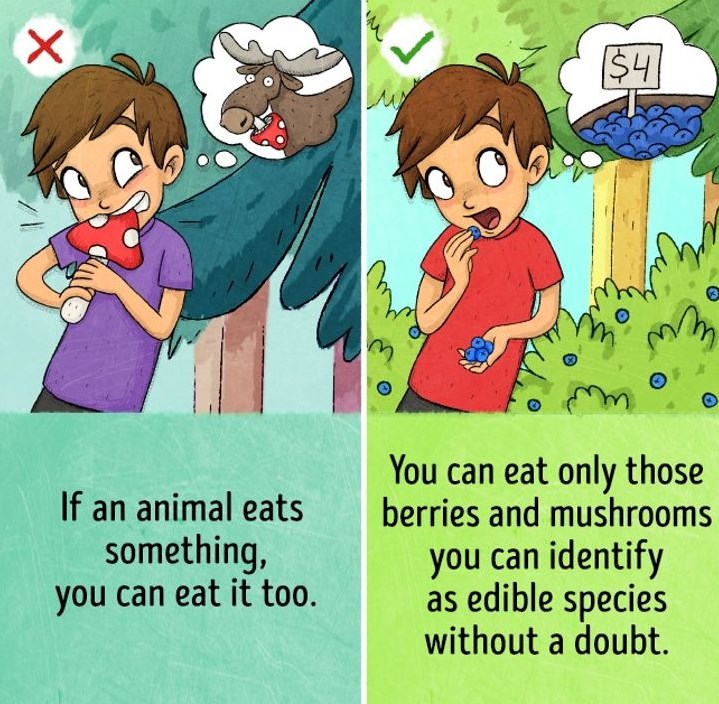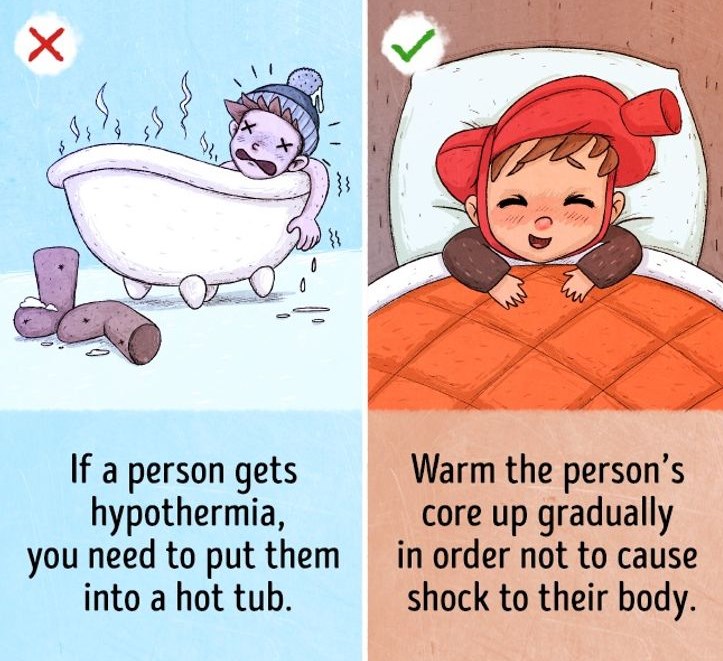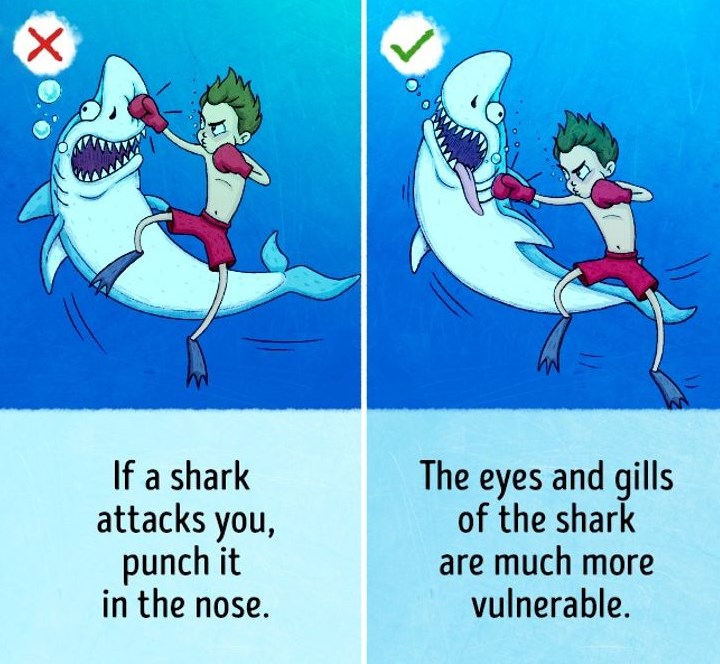
9 survival myths that can actually hurt you
There are several rules that explain how to act in an emergency. But are all of them right effective?
We discovered that some of these survival tips are in fact myths that are not only useless but potentially dangerous as well.
First aid for a snake bite

Snake venom very quickly enters the bloodstream, and does not accumulate in the sting area. So the attempt to suction it is considered ineffective. Moreover, when you put your mouth on the sting, the poison may enter your mouth and esophagus. When you remain calm, it is the best way to prevent toxins from moving quickly through the bloodstream, keeping the wound below heart level, drinking plenty of fluids, and of course trying to get to the hospital as soon as possible. Maybe
What to do if you get lost in the woods

Finding some food is the first thing to do if you get lost in the wild. This is not entirely true as a healthy person can live without food for a long time: up to 6 weeks. Your first priority is to find a source of water and build a shelter where you can hide from the harsh weather.
How to build a large shelter

You must assess your surroundings and weather conditions, before you embark on a suitable shelter. You need shelter to protect you from wind, rain or hot sun. But it is not enough to just build a simple method. The cold earth will literally absorb the heat from you at night unless you build a layer between your body and the ground..
How to find water in the desert

There is only one type of Aloe Vera Barrel that contains drinking water.You can get moisture from opuntia, too.But most of the time, aloe vera is poisonous. Drinking fluids in them will make you sick, causing you to vomit valuable liquid and leave you more dehydrated.
How to survive a bear attack

Bears don’t want to attack you, let alone eat you. You just need to step back slowly, in most cases, and watch the bear closely. Keep your distance. This will show the bear that you have no claims to its land.
How do you know which plants are safe to eat and which are toxic

In fact, some types of berries and mushrooms that are deadly to humans are not toxic to many animals and birds. So the only way to distinguish an edible plant from a poisonous one is to accurately identify the types of fungi or individual berries.
How to find direction with tree moss

Moss can grow on all sides of the tree, depending on environmental conditions. While trying to find your way out of the woods, don’t rely on this popular myth, or you will be lost in the latter. Here are the methods for determining direction without a compass
How to treat hypothermia

Never scrub the frostbitten areas as this may cause further tissue damage. In order to warm the victim, you should not use hot water or a heating lamp. Treatment like this may result in shock to the victim’s body. Instead, the person’s heart should be warmed gradually, preferably with blankets and some bottles of warm water under the armpits.
How to survive a shark attack

You may have heard that you must punch a shark in the nose to survive an attack. Even if this were true, many people do not have enough strength to do so, especially underwater. In an extremely rare case of a long negative encounter, try to place a hard object between you and the animal (for example, a diving mask or a swimming board). The best way to frighten a shark is to scratch its eyes or gills, if nothing is at hand.
